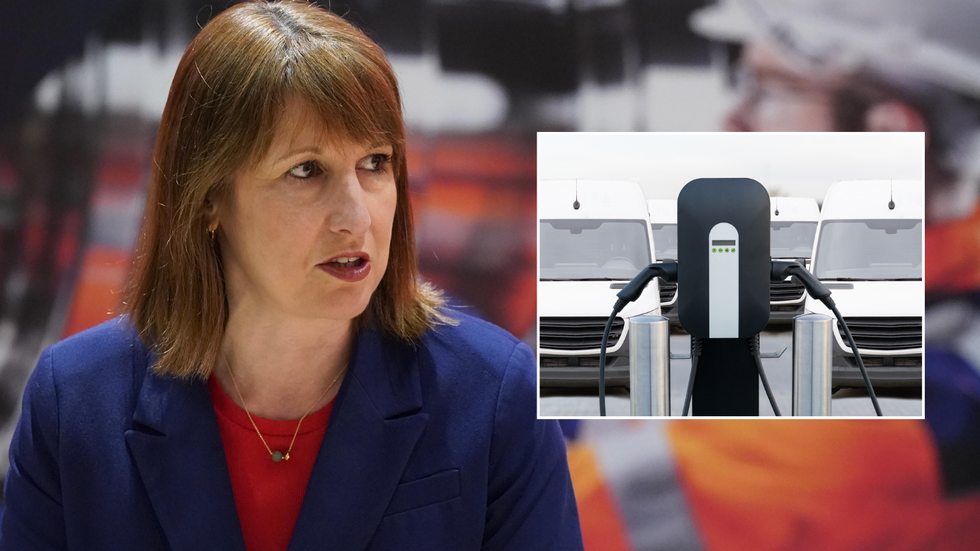WATCH: Rachel Reeves announces changes to Vehicle Excise Duty rates
GB NEWS
New Vehicle Excise Duty rates came into effect on April 1
Don't Miss
Most Read
Trending on GB News
Rachel Reeves' decision to end Vehicle Excise Duty (VED) exemptions for a certain vehicle type has sparked concerns about the potential impact this could have on businesses wanting to go greener.
The tax changes, which came into effect on April 1, now see electric vans taxed for the first time and come at a critical moment when electric van adoption is gaining momentum across the UK.
Industry experts have warned that the new VED rates could risk hampering the Government's net zero ambitions, particularly in regions where clean air policies have successfully driven electric van uptake.
A recent report found that business enquiries for electric vans have increased by 485 per cent year-on-year, but the new taxation could affect initial budgeting for companies considering the switch.
Do you have a story you'd like to share? Get in touch by emailingmotoring@gbnews.uk

Under the new VED rates, electric vans will face new charges for the first time
PA/GETTY
Under the new VED rates, electric vans will no longer be exempt, with costs varying based on vehicle specifications.
Light goods vehicles registered after March 1, 2001, and not exceeding 3,500kg will face a standard rate of £345 for the year, with the biggest change now being the inclusion of electric vans.
Meanwhile, Euro 4 and Euro 5 compliant light goods vehicles will be charged £140 for the 12 months. This represents a significant shift from the previous policy, where electric vans were exempt from VED charges.
The changes come as part of broader tax reforms implemented by Chancellor Rachel Reeves, affecting businesses that have invested in electric fleets to reduce emissions and operating costs.
The South East of England emerged as the UK's electric van hotspot, with 31,782 electric vans registered in the region, with the growth linked to the creation of new Clean Air Zones and Low Emission Zones.
Similarly, in the South West, where Clean Air Zones are currently in place across Bath and Bristol, there has been a boost in electric van numbers.
The improved performance of electric vans has also helped with their uptake, with average range increasing by 38 per cent in just five years, from 144 miles in 2020 to 198 miles in 2025.
Battery capacity has also increased by 27 per cent, up from 45kWh in 2020 to 58kWh today, while payload has also seen steady gains, with electric vans now capable of carrying 887kg.
Mike Fazal, CEO of Leasing.com, said: "The Vehicle Excise Duty changes, which will see electric vans taxed for the first time, could impact adoption. That said, running costs for electric vans are still considerably cheaper than ICE counterparts. Plus, advancements in range, battery size, and payload capacity are helping to close the gap."
Fazal also highlighted how the upcoming licensing reforms could help businesses transition to electric vans. "Soon, your standard driving licence holder (Category B) will be able to drive zeroemission vehicles up to 4.25 tonnes, addressing a long-standing issue where electric vans were classified as HGVs due to their heavy battery weight," he explained.
The Government has also extended the Plug-in Van Grant for another year to support businesses transitioning to electric vehicles. Van drivers and businesses can receive grants up to £2,500 for small vans up to 2.5 tonnes and up to £5,000 for larger vans up to 4.25 tonnes.
Despite the additional help, small businesses and tradespeople in areas with Clean Air Zones have been warned they could face difficult decisions as they balance environmental compliance with increased taxation.
LATEST DEVELOPMENTS:

Electric vans are no longer exempt from paying Vehicle Excise Duty
PACouncils in St Albans, Wokingham, and Sefton have considered new Low Emission Zones, which could drive up electric van numbers further. However, the new VED rates may slow this momentum down as drivers juggle car tax payments with new road charges.








